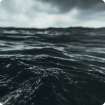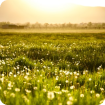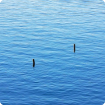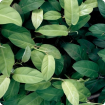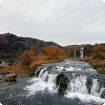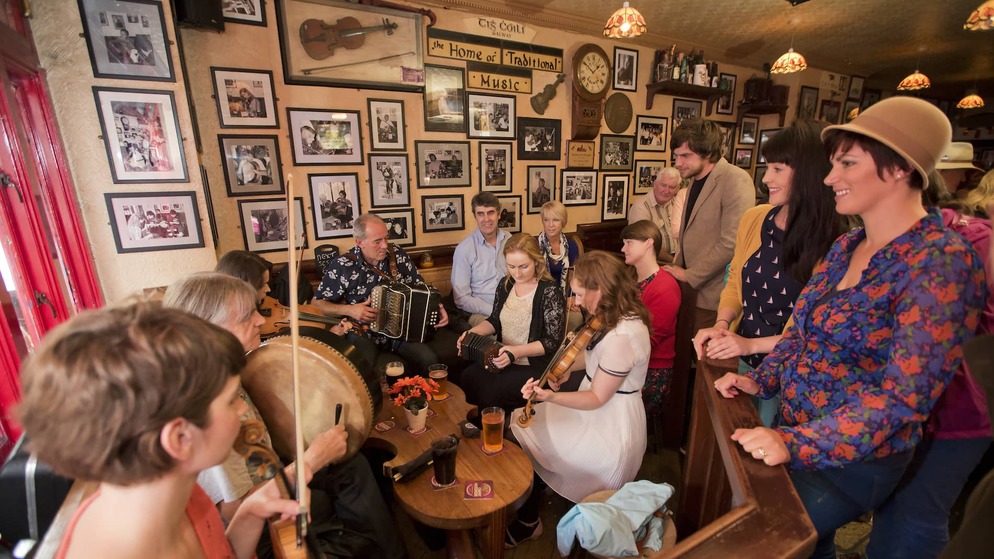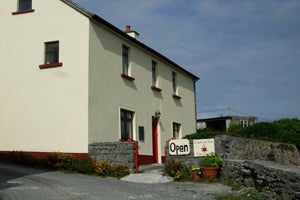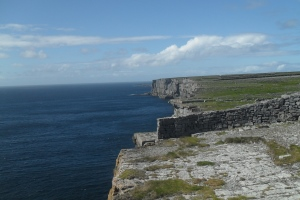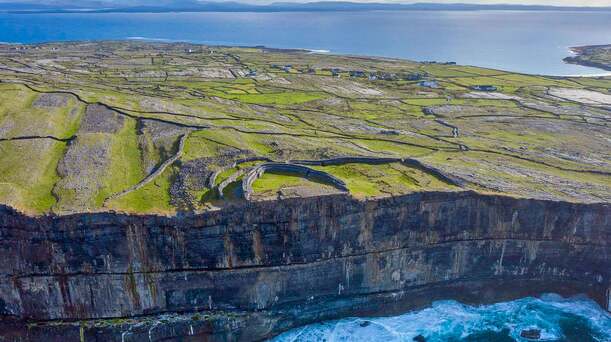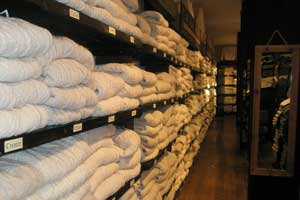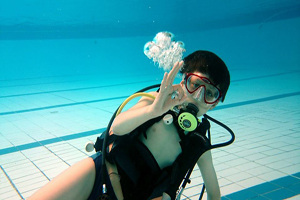

The Aran Islands
The Aran Islands, County Galway
The Wild West
Located 48km (30 miles) away from Galway Bay are the Aran Islands – Inis Mór, Inis Meáin and Inis Oírr – the last lands to the west before you reach America. Famed for their wild landscapes, distinctive knitted jumpers and pretty cottages, the Irish-speaking Aran Islands never fail to wow. These three islands have maintained the culture and heritage of traditional Irish life, and fascinate the thousands of visitors who make the journey every year.
Images of the island are instantly recognisable due to their landscape, which is criss-crossed with stone walls, a traditional feature found in the west of Ireland. Having inspired countless writers, poets and artists over the centuries, many come to the Aran Islands on a retreat to connect with authentic and rural Ireland. The three are all Irish-speaking communities, but residents are bilingual and English is their second language.
This is the last outpost of ancient Europe, I am privileged to see it before it disappears forever
JM Synge
The Aran Islands, County Galway
L-R: Dún Aonghasa, Inis Mór; cycling on Inis Oírr; O'Brien's Castle, Inis Oírr; knitwear from Inis Meáin
Getting here
Getting to the island couldn’t be easier by ferry, which departs daily from Rossaveal (Ros a Mhíl) just outside Galway city all year round, or from Doolin in County Clare, which operates from March through to October. You can also get there by air in just eight minutes with Aer Arann! Remember you’re at the edge of the Atlantic Ocean so always dress appropriately – it can get windy out there. Island-hop between the three, rent bicycles and explore the hidden corners, ancient sites and enduring traditions. Travel one, or make it your business to visit all three – the choice is yours.
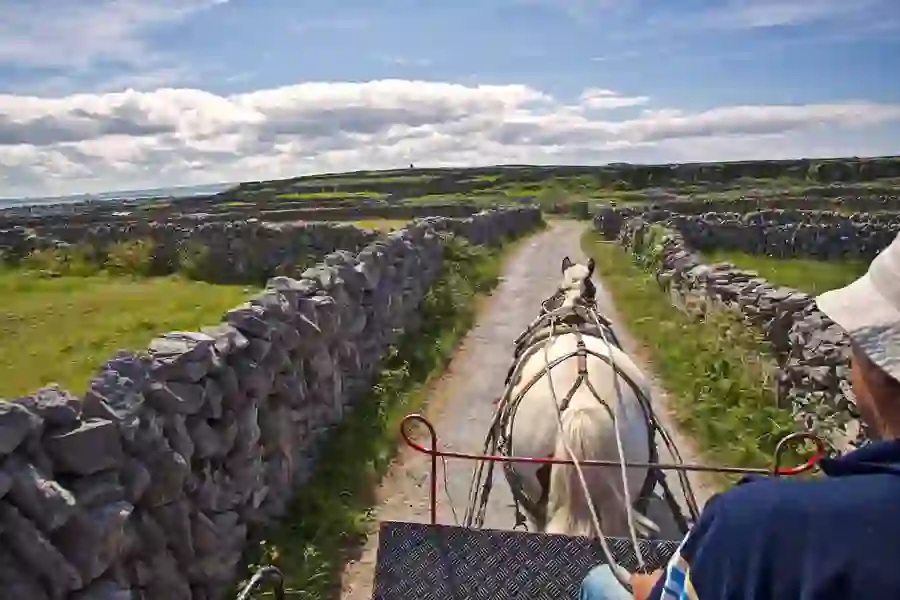
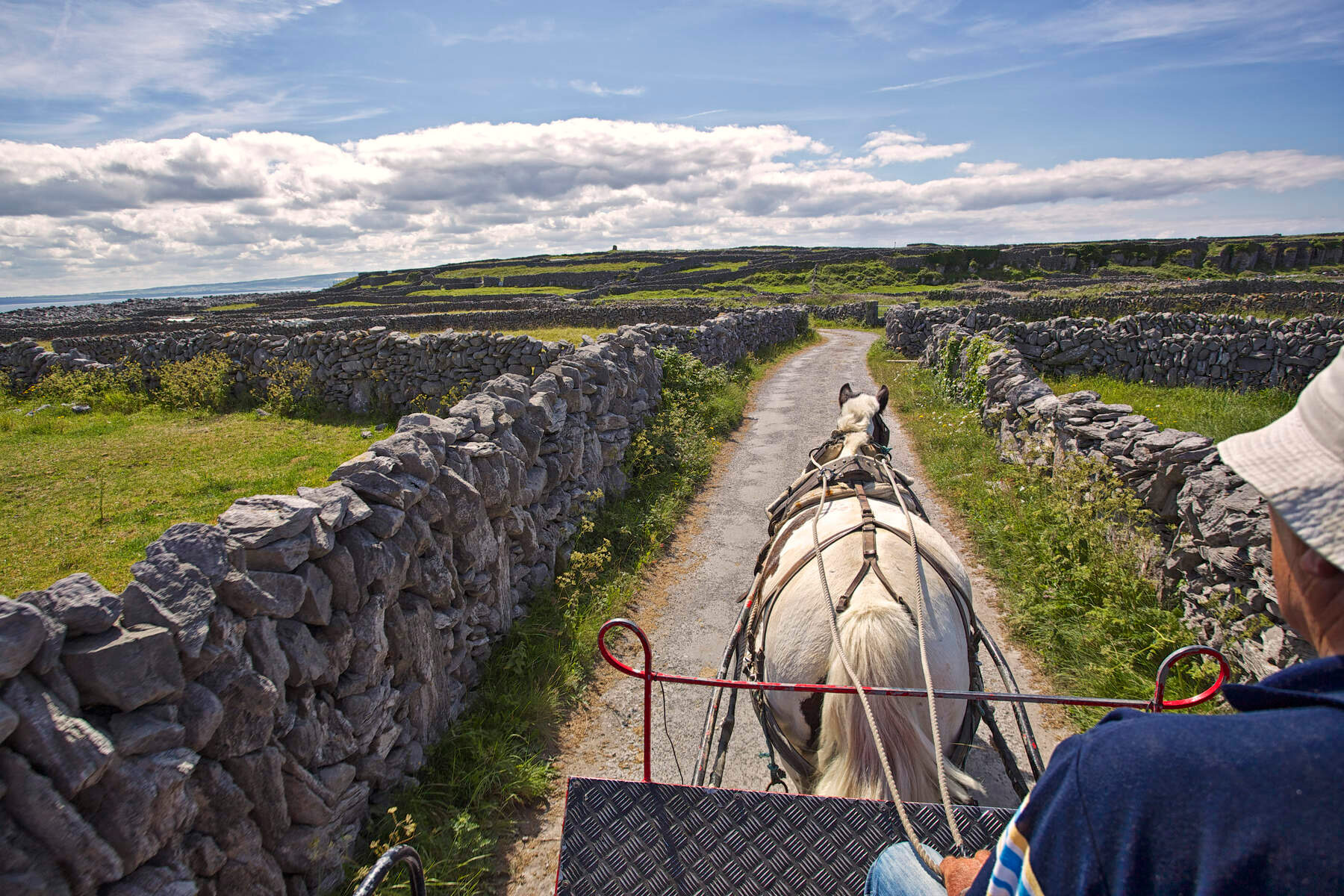
Inis Mór, Aran Islands, County Galway
Inis Mór
Inis Mór is the largest of the three islands (‘Mór’ means ‘big’ in Irish) and has a population of around 800. Considering it’s only 12km (7.4 miles) in length and 3km (1.8 miles) wide, there are plenty of historical sites to see, such as Dún Aonghasa (Dun Aengus), Na Seacht dTeampaíll (The Seven Churches), and a round tower.
The landscape of the island is distinctive, with miles of stone walls and fissured limestone that stretch out to massive cliffs on the western side of the island. Nature has provided a wave-sculpted coastline, a thriving seal colony, wild swans, ducks, and rare birds, all complementing the ancient ruins, buzzing nightlife and local cafés and restaurants that this island is famous for.

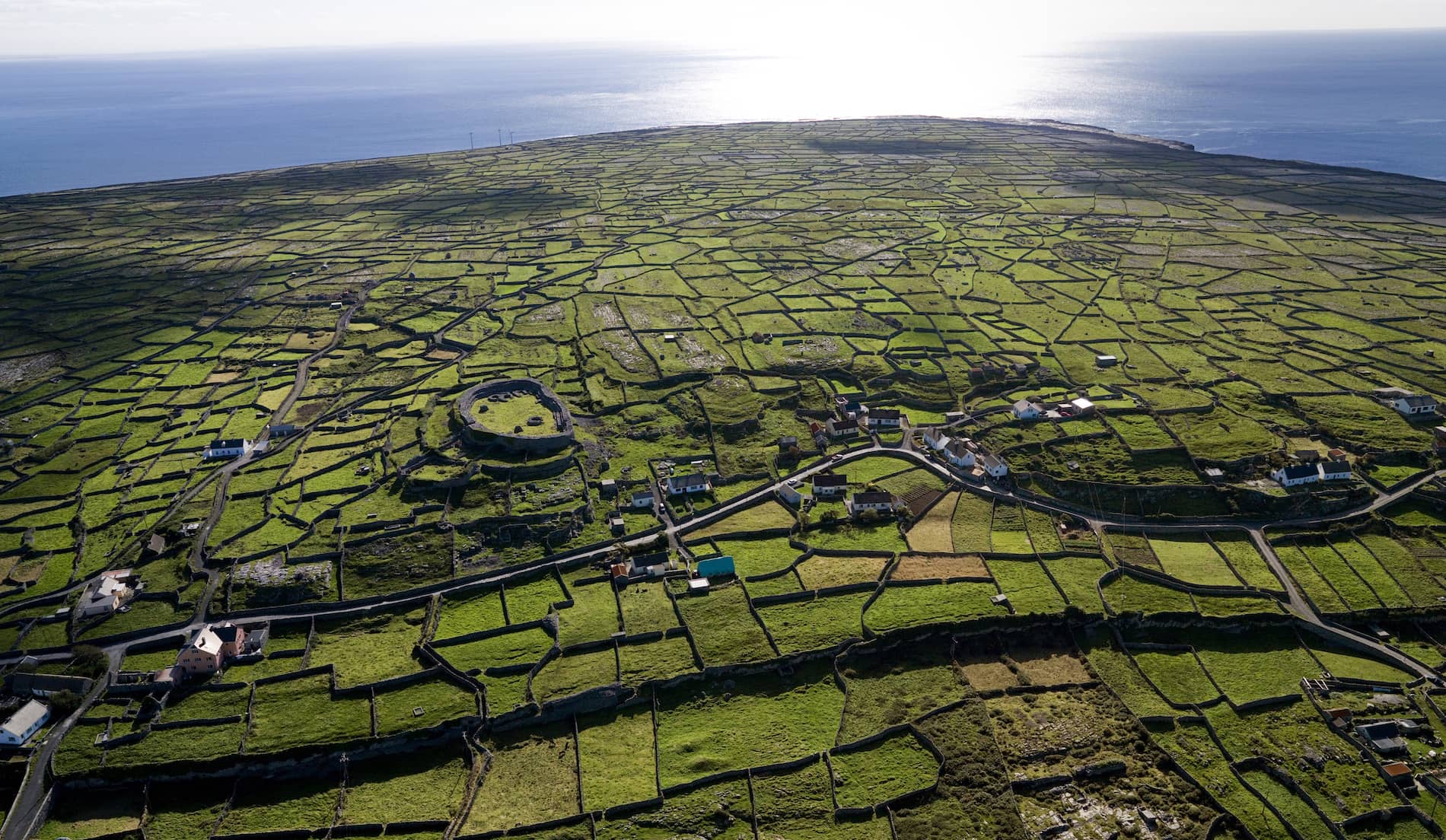
Inis Meáin, Aran Islands, County Galway
Inis Meáin
Inis Meáin translates as "the middle one" and prides itself on remaining quite traditional in modern times. It’s here that the world famous Aran jumpers are still made along with contemporary knitwear designs at the Inis Meáin Knitting Company.
Fishing was a huge part of life, and so these jumpers quickly became a staple of the Aran families. Folklore has it that the origin of the sweater came about when a fisherman and his family would add a unique pattern into the stitch. This was done so that if they were drowned and later found, maybe weeks later, his body could be identified by the stitching.
For a while, the Aran jumpers remained the Aran Islands’ little secret. However, the great literary revival of the 20th century brought visitors in search of authentic Irish language and folk traditions. The industrious Aran women took hold of this and began selling their designs to the mainland.
Inis Meáin has more to offer than world-famous jumpers. In the middle of the island you’ll find a landscape that you could gaze at for hours: ash-coloured rock etched with delicate flowers, green fields bordered with dry-stone walls, and the Atlantic Ocean crashing in the distance. Inis Meáin is the least visited of all the Aran Islands, and you can often find yourself almost alone here as you explore dramatic cliffs, deserted beaches, and car-free country lanes.

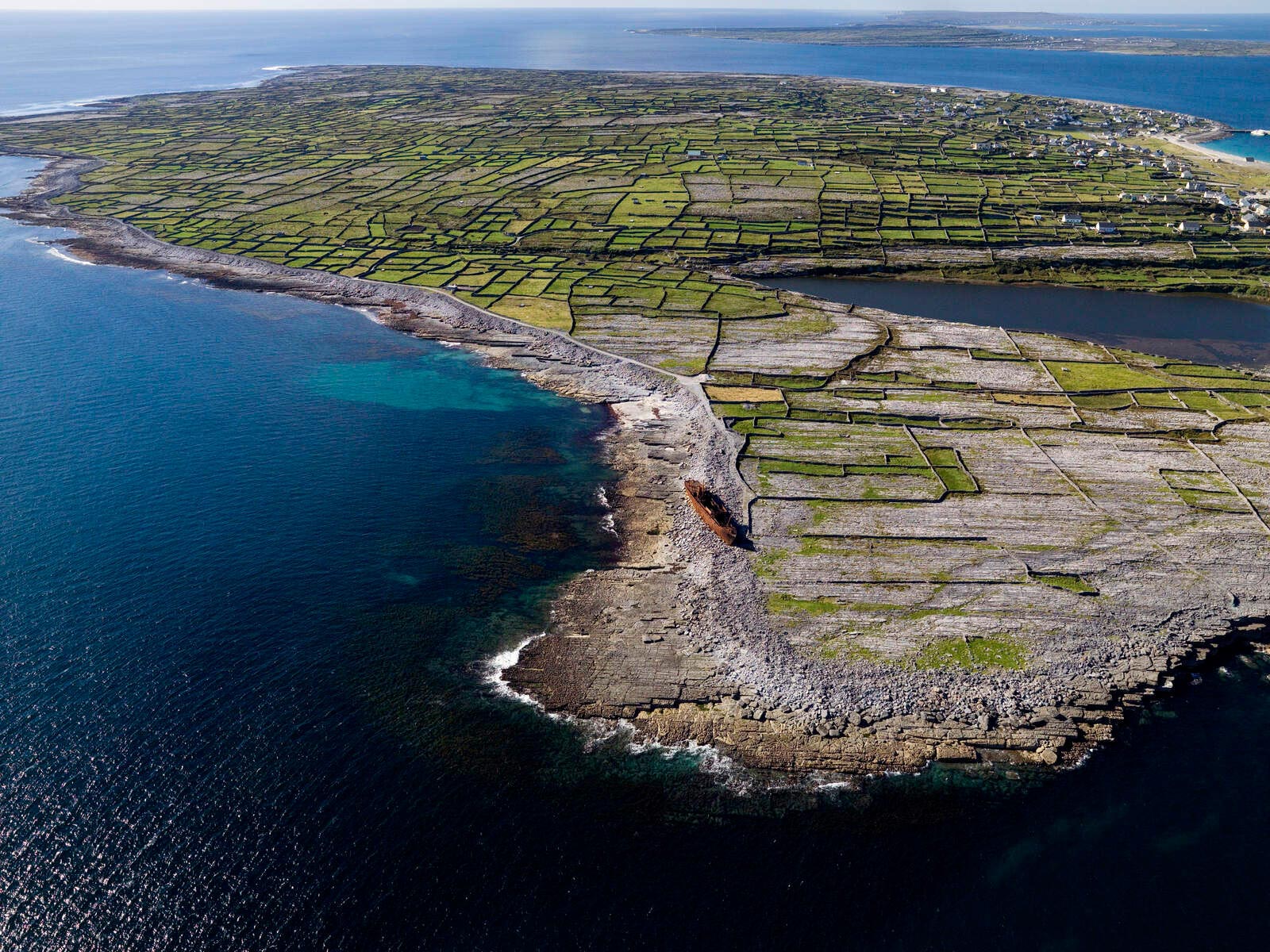
Inis Oírr, Aran Islands, County Galway
Inis Oírr
Cycling the roads lined with dry-stone walls and flecked with wildflowers is the best way to explore Inis Oírr. The smallest of the Aran Islands and the closest to the mainland, it’s less than 3km (1.8 miles) in length, and only 2km (1.2 miles) wide. Inis Oírr has a similar landscape to The Burren in County Clare, and therefore, the flora is under conservation. The first thing you’ll notice is a powder-soft, white sandy beach lapped by crystal clear waters. It’s a wonderful introduction to an island that blends moments of fragile beauty with the rough, but solid, craggy limestone, typical of the area.
Skellig Islands highlights
Don't miss these things to see and do

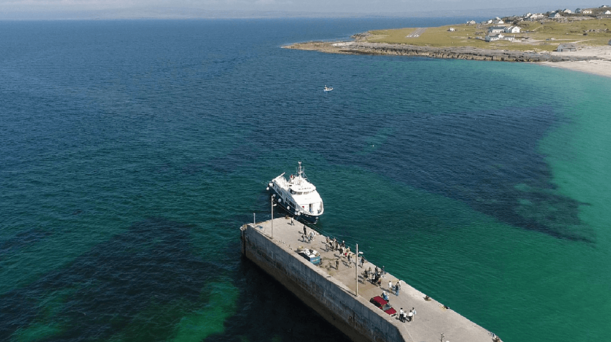
Attraction





